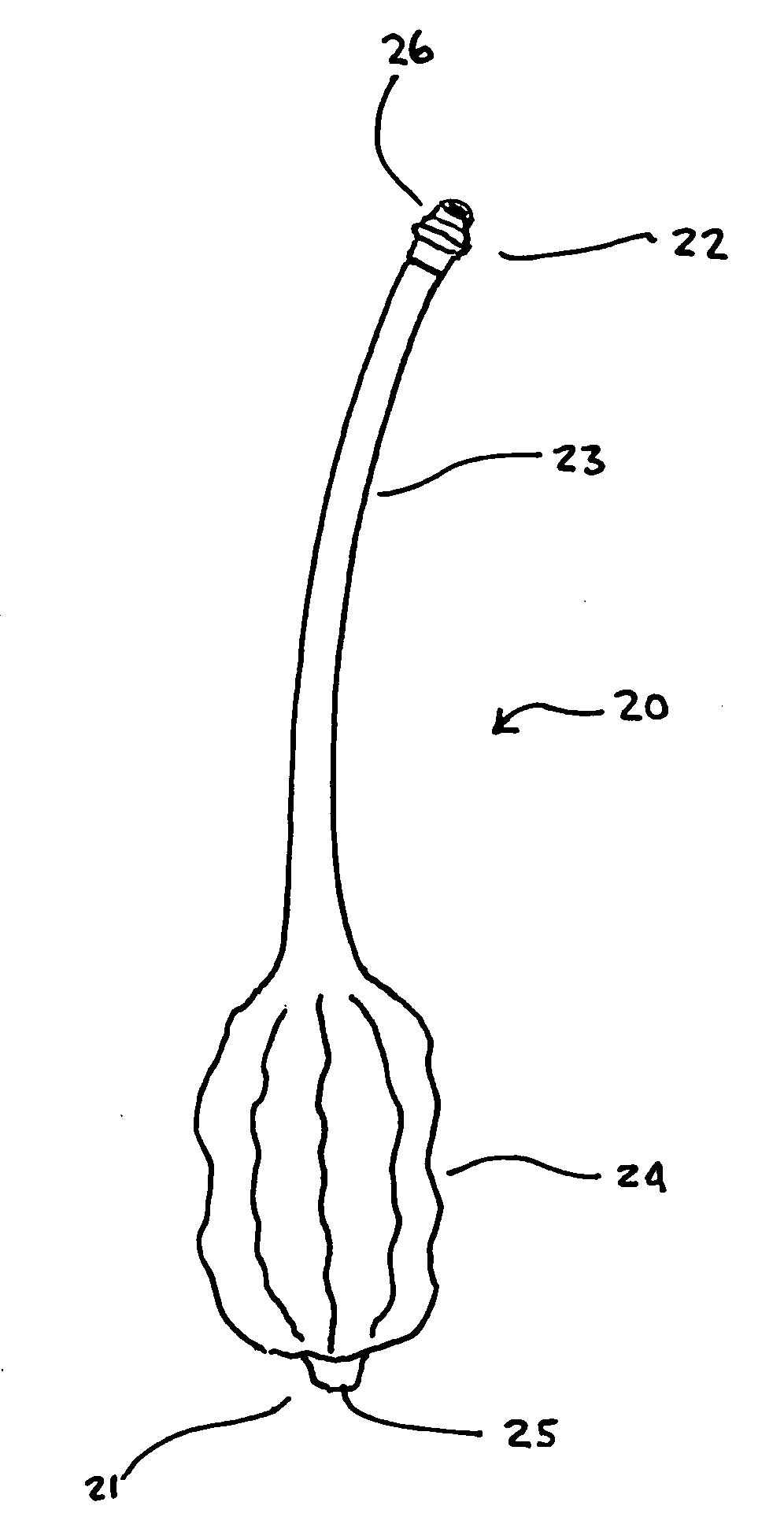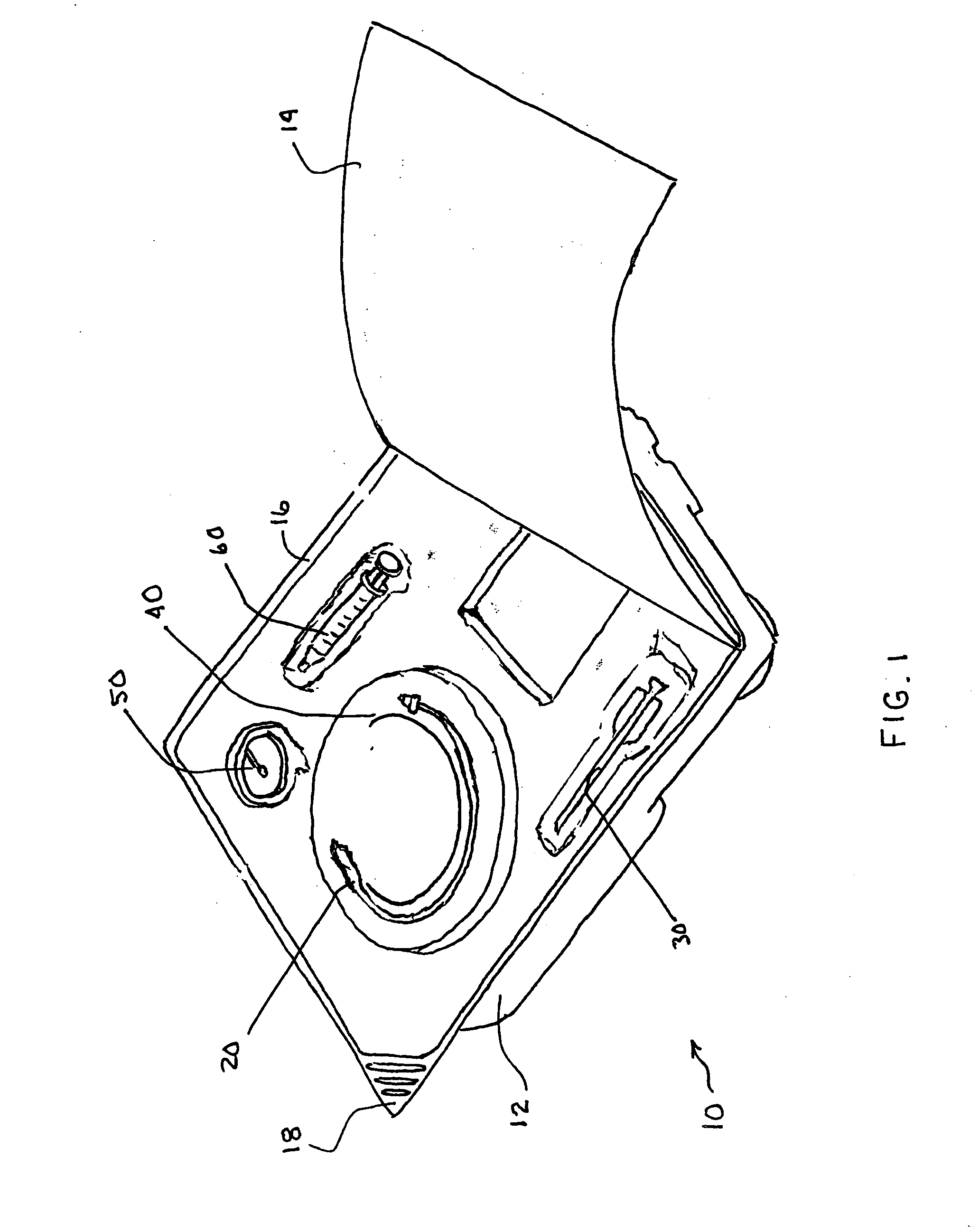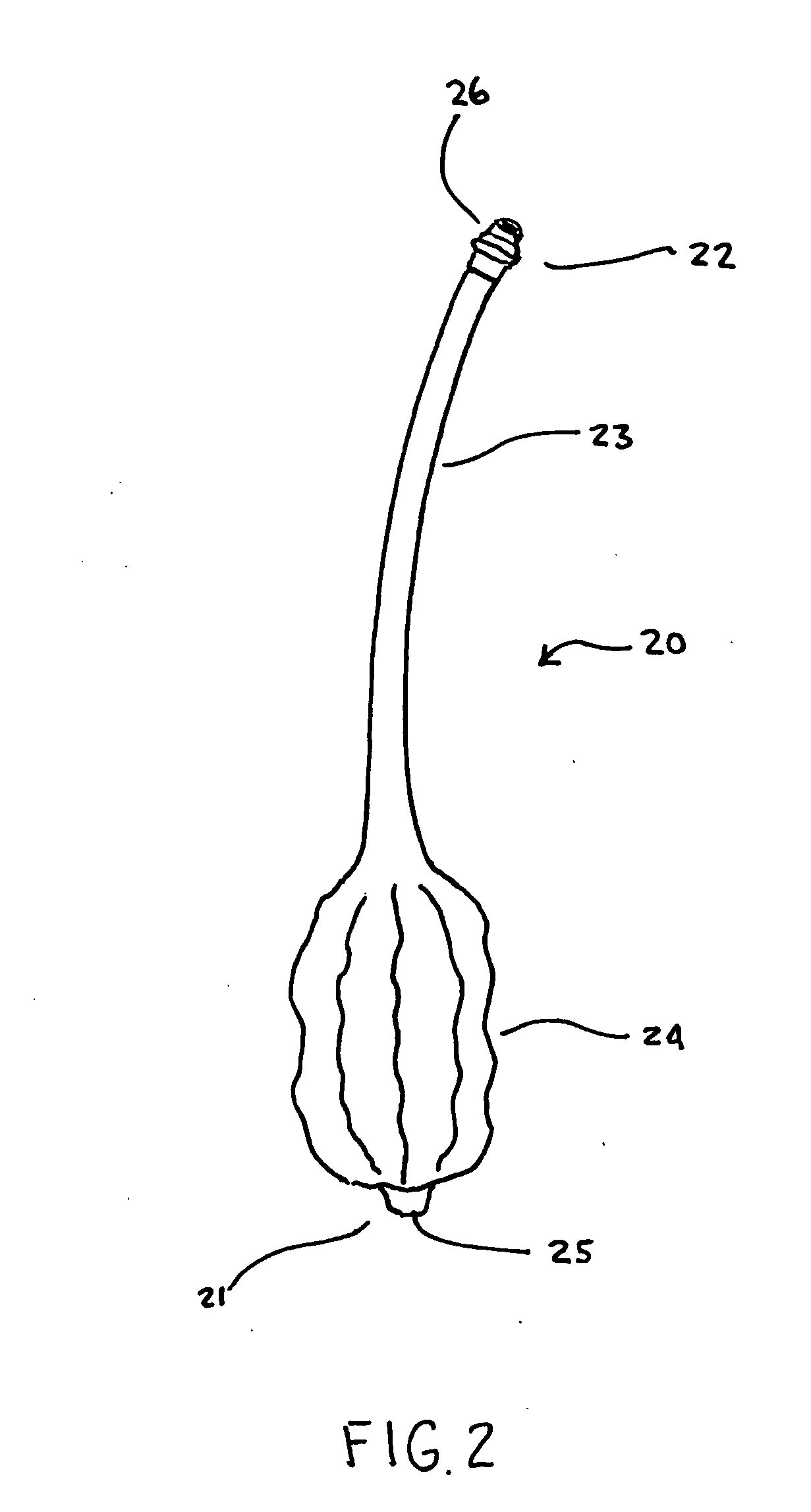Percutaneous gastrointestinal anchoring kit
a percutaneous gastrointestinal and kit technology, applied in the field of surgical kits, can solve the problems of irritating the stomach lining, minor erosion of the device, and the inability to easily remove the initial placement devi
- Summary
- Abstract
- Description
- Claims
- Application Information
AI Technical Summary
Benefits of technology
Problems solved by technology
Method used
Image
Examples
second embodiment
[0048]In a second embodiment depicted in FIG. 8, a multicomponent design may be used to secure the anchor 20 in place. One example may utilize a base plate 53 for seating against the patient's body, and a lid or cap 54 secured to the cap to cover the base plate 53 as well as that portion of the anchor 20 protruding from the body. The base plate 53 may be configured similarly to the FIG. 7 retainer in that it would possess a slot 51 or central opening which would enable the base plate to secure the shaft 23. The shaft 23 may be pulled under tension and wedged or otherwise secured into the base plate 53, for example, by engaging the shaft 23 with a fixture 55 such as by passing the anchor 20 through the fixture 55 and wrapping the shaft 23 around the fixture to secure the shaft 23 in a manner reminiscent of tying a line to a cleat. This configuration may also be covered with a bandage as described above, or the cap 54 may be secured over the base plate 53. The base plate 53 and cap 54...
third embodiment
[0049]the retainer 50, may be similar to that depicted in U.S. patent application Ser. No. 11 / 139,927 filed on May 27, 2005 entitled “Clamp for Flexible Tube” which is copending and commonly assigned, the disclosure of which is herein incorporated by reference in its entirety.
[0050]FIG. 9 depicts the anchor 20 in place within a body 100. As may be seen the inflator 60 is connected to the anchor 20 at the connector 26. Due to the small size of the anchor 20, the inflator 60 may simply be a syringe capable of injecting into as well as removing a fluid from the anchor 20. Although in many instances, the fluid is air, it should be understood that the ballooned region 24 may be inflated and deflated upon application or removal of other fluids, both gaseous and liquid, including but not limited to water and saline. In the FIG. 9 embodiment, it may be seen how the anchor 20 is used to secure the gastric wall 101 to the abdominal wall 102 by entering the patient's body 100 into the stomach ...
PUM
| Property | Measurement | Unit |
|---|---|---|
| Force | aaaaa | aaaaa |
| Diameter | aaaaa | aaaaa |
| Permeability | aaaaa | aaaaa |
Abstract
Description
Claims
Application Information
 Login to View More
Login to View More - R&D
- Intellectual Property
- Life Sciences
- Materials
- Tech Scout
- Unparalleled Data Quality
- Higher Quality Content
- 60% Fewer Hallucinations
Browse by: Latest US Patents, China's latest patents, Technical Efficacy Thesaurus, Application Domain, Technology Topic, Popular Technical Reports.
© 2025 PatSnap. All rights reserved.Legal|Privacy policy|Modern Slavery Act Transparency Statement|Sitemap|About US| Contact US: help@patsnap.com



